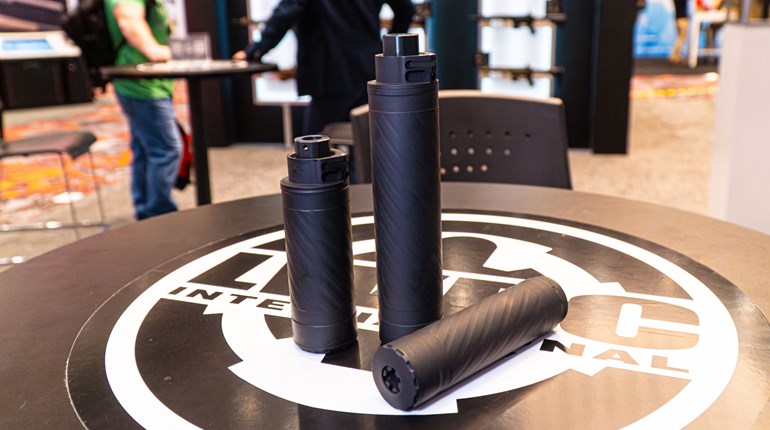
There has been a lot of buzz about silencers and what some call sound suppressors in shooting circles as of late. My curiosity has been piqued as to what the difference is and how to select the best of many options should the interest persist. Which would serve the best purpose for casual shooting with a secondary duty of home defense? I’d appreciate any insight you could provide.
Michael Duncan
Houston, TX
Silencers and sound suppressors are different words for the same item. Mechanically, they do the same thing. Ammunition tends to differentiate the audible results, which can lead to confusion in terms.
When using ammunition producing velocities slower than the speed of sound, often referred to as subsonic, it is not uncommon for little more than the mechanical sound of the firearm’s action to be heard at the gun. Target impact may be the only other recognizable sound when a shot is fired. The actual report of the cartridge firing appears to be “silenced” by the device on the muzzle or integral to the firearm.
A sound suppressor is generally associated with firearms firing supersonic ammunition in which the projectiles exit the muzzle in excess of the speed of sound. They, therefore, produce a sonic crack as they break the sound barrier on the way to the target. The sound of firing is mitigated considerably by the suppressor, yet the speed of the bullet makes each discharge anything but silent.
When shopping for a sound suppressor, there are many choices and perhaps compromises to be made. The buyer needs to decide what the primary purposes of the suppressor may be, such as whether it will be dedicated to one gun or used on several. Calibers and cartridges have to be considered for compatibility if the suppressor is to be used for multiple applications. A suppressor for a .22 LR application would be destroyed if attached to a rifle chambered for 5.56 NATO and fired with military ball ammunition, even though both cartridges utilize a .22-caliber projectile. Although I don’t recommend it for reasons too numerous to cover here, a .22 rimfire cartridge could be fired through a 5.56 NATO-rated suppressor without damaging the suppressor.
Weight, length and diameter all play a part in the usefulness of a suppressor. Weight and length affect the balance and handling of the host firearm. Diameter is usually a concern with pistols in that the standard sights are too low on the slide, preventing a conventional sight picture. This can be easily remedied by installing a taller set of sights to facilitate aiming in spite of the suppressor’s diameter.
Another factor that determines weight is the composition of the components. Tubes, baffles and endcaps are all made in combinations or totally of aluminum, steel and titanium. Inconel and even polymer are occasionally used as internal components of suppressors.
Not only do these materials affect the weight, balance and durability of a suppressor, but the maintenance methods used to clean and service the suppressor, as well. Aluminum components do not fare well in ultrasonic cleaners, which work very well in removing firing residue from steel parts. There are enough variables in the recommended cleaning and maintenance procedures for suppressors that a blanket statement would be difficult to make. Read and follow the instructions that came with the suppressor when new and it will be hard to make a mistake.
There are two schools of thought regarding assembly methods of suppressors that divide owners much like political parties. One insists the suppressor should be sealed at the factory so it cannot be disassembled by the user. The other suggests it is imperative for the end user to be able to perform maintenance to maximize long-term performance. Both have their points and represent high-quality products. In this case I defer to the user’s preference.
Suppressors have seen a recent resurgence for recreational purposes, hunting and personal defense in the last few years. Now is a good time to join the growing ranks of shooters choosing to protect their hearing with these safety devices. Your ears in later years will appreciate it.





































